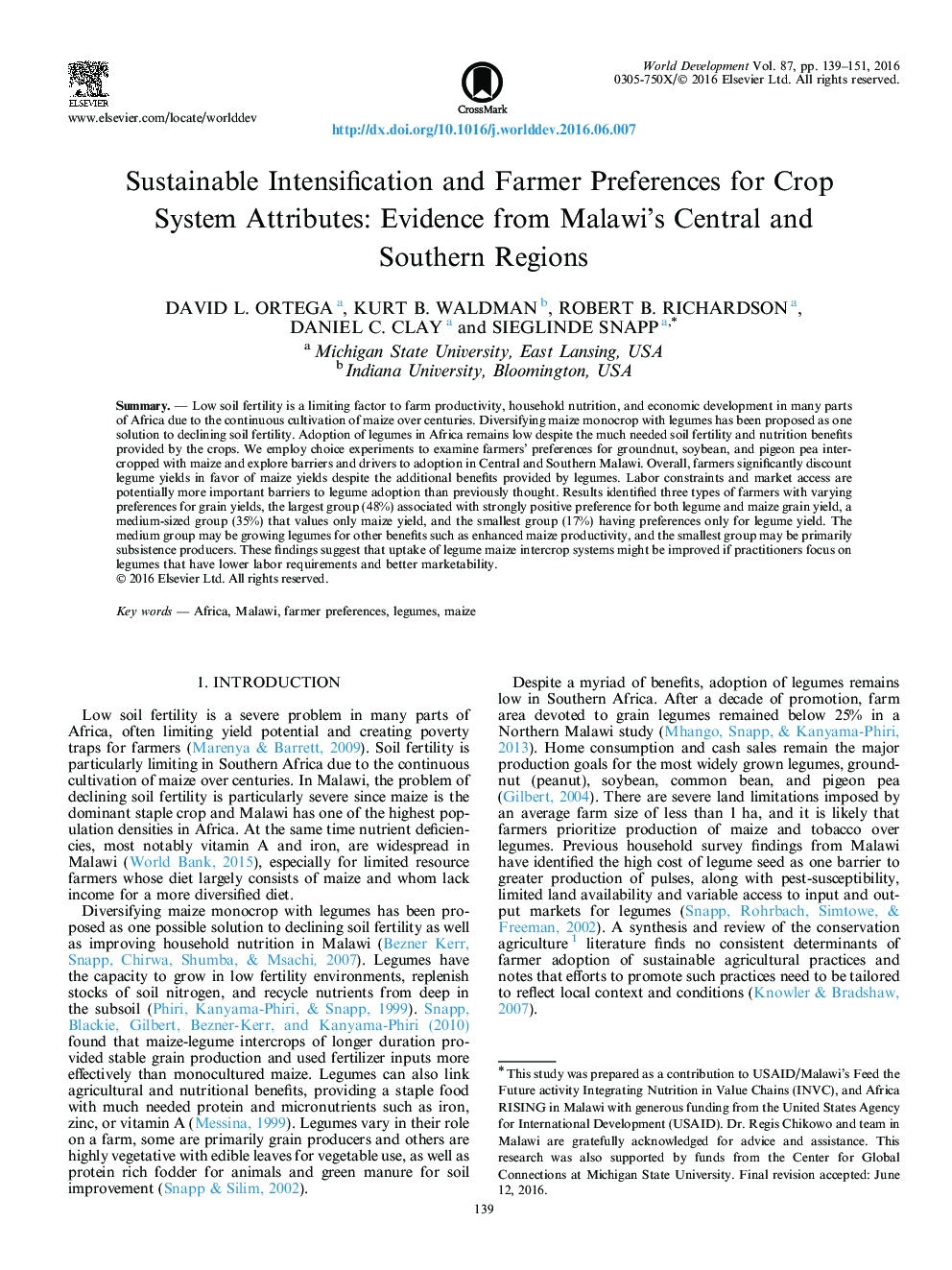| Article ID | Journal | Published Year | Pages | File Type |
|---|---|---|---|---|
| 7392401 | World Development | 2016 | 13 Pages |
Abstract
Low soil fertility is a limiting factor to farm productivity, household nutrition, and economic development in many parts of Africa due to the continuous cultivation of maize over centuries. Diversifying maize monocrop with legumes has been proposed as one solution to declining soil fertility. Adoption of legumes in Africa remains low despite the much needed soil fertility and nutrition benefits provided by the crops. We employ choice experiments to examine farmers' preferences for groundnut, soybean, and pigeon pea intercropped with maize and explore barriers and drivers to adoption in Central and Southern Malawi. Overall, farmers significantly discount legume yields in favor of maize yields despite the additional benefits provided by legumes. Labor constraints and market access are potentially more important barriers to legume adoption than previously thought. Results identified three types of farmers with varying preferences for grain yields, the largest group (48%) associated with strongly positive preference for both legume and maize grain yield, a medium-sized group (35%) that values only maize yield, and the smallest group (17%) having preferences only for legume yield. The medium group may be growing legumes for other benefits such as enhanced maize productivity, and the smallest group may be primarily subsistence producers. These findings suggest that uptake of legume maize intercrop systems might be improved if practitioners focus on legumes that have lower labor requirements and better marketability.
Related Topics
Social Sciences and Humanities
Economics, Econometrics and Finance
Economics and Econometrics
Authors
David L. Ortega, Kurt B. Waldman, Robert B. Richardson, Daniel C. Clay, Sieglinde Snapp,
